Jaguar I-Pace Vs Tesla Model X: Which EV is Right for You?

While the number of electric vehicles on sale today is growing, there still aren’t very many options for those who want a battery electric car or crossover.
The Jaguar I-Pace and Tesla Model X were among the first electric crossovers on sale and are thus popular options for consumers who want an electric vehicle with some additional capability.
Get a Quote on a New Jaguar I-Pace or Tesla Model XBut which of these two EV crossovers is better suited to you? That’s exactly what we’re going to answer in this post. We’re going to compare the I-Pace and Model X’s styling, interior space, build quality, available powertrains, pricing, and other important factors so you know which of these is the better vehicle for your needs.
Get scrolling to learn all there is to know about the Jaguar I-Pace and the Tesla Model X.
Jaguar I-Pace vs Tesla Model X
Body Styles/Design
Jaguar I-Pace: The Jaguar I-Pace is a somewhat radical-looking vehicle with its narrow greenhouse, high beltline, flat rear, and extremely narrow rear window. We quite like the way it looks, however, and think it’s imposing yet sporty when out on the road. Looks are subjective, but the I-Pace is a winner in the looks department, if you ask us.
Tesla Model X: Unfortunately, the same can’t be said for the Tesla Model X. With a skinny, upright stance, strange proportions, and over-the-top falcon wing doors, the Model is a bit of an oddball in the styling department. We can see how some might like the way it looks though, if only for the sci-fi factor. There have also been complaints of quality issues like bad panel gaps and malfunctioning falcon wing doors.
Bottom Line: Looks are subjective, but we think the I-Pace is the better-looking EV of these two. Both of these designs are contemporary and modern, though, so if that’s what you like, you’ll probably find them both to be rather neat-looking.
Space/Practicality
Jaguar I-Pace: The Jaguar I-Pace has 25.3 cubic feet of cargo space behind the second-row seats and 51 cubic feet of space with the rear seats laid flat. There’s also 0.95 cubic feet of cargo space in the “frunk” (front trunk) and 0.43 cubic feet of cargo space in the center console. Front seat legroom is 40.9 inches and front seat headroom is 39.9 inches, while rear seat legroom is 35 inches and rear seat headroom is 38.1 inches.
Tesla Model X: The Tesla Model X has 88.1 cubic feet of cargo space in the five-seat configuration, which includes the frunk space as well. We couldn’t find a cargo capacity estimate without the frunk included. Front seat legroom is 41.2 inches and front seat headroom is 41.7 inches. Rear seat second-row legroom is 38.4-inches and second row headroom is 40.9-inches.
Bottom Line: The Tesla Model X is more practical than the Jaguar I-Pace with quite a bit more cargo and passenger space. It also has easy ingress/egress rear doors, an available third-row, and a larger front trunk, or frunk. The Tesla is, therefore, better suited to families, in our opinion, essentially acting as an electric minivan.
Powertrains/Driving Range
Jaguar I-Pace: The Jaguar I-Pace is powered by two electric motors that have a combined output of 397 hp and 517 lb-ft of torque. A 90 kWh lithium-ion battery provides an EPA estimated driving range of 234 miles. It can accelerate from 0-60 mph in 4.8s and will top out at 124 mph, or 200 km/h.
Tesla Model X: The Tesla Model X is available in two trims: 100D and P100D.
The 100D has two electric motors making 259 hp and 193 lb-ft, which can propel it from 0-60 mph in around 5s. With a 100 kWh battery pack, the EPA rates the Model X 100D at 295 miles of range total.
Then there’s the Model X P100D, which makes an incredible 762 horsepower and 791 lb-ft of torque combined thanks to a more powerful rear performance motor. It has essentially the same EPA estimated range as the 100D at 289 miles and will accelerate from 0-60 mph in about 2.9s.
SEE ALSO: Honda CR-V vs Honda HR-V: Which Crossover is Right for You?
Bottom Line: The Model X has the more impressive powertrain and with access to Tesla’s Supercharger grid, you can more easily charge it up at a larger number of locations. The charging grid for non-Tesla EVs is growing rapidly, though, and the I-Pace is still plenty fast and has a decent amount of range.
Driving Dynamics
Jaguar I-Pace: When we drove the 2019 Jaguar I-Pace, we said that it “performs admirably on tight curving roads as well as up gravel-strewn two tracks.” We also said that it is “unnervingly silent,” even at highway speeds, “with just a whisper of wind and tire noise making their presence heard.” We also said the acceleration was “downright giggle-inducing,” before concluding that “this sucker’s FAST.” So yeah, the I-Pace drives well and rides smoothly and quietly.
Tesla Model X: The Tesla Model X drives like the large family vehicle that it is, but is rather handy through twisty sections thanks to its low center of gravity. It also makes an absolutely monstrous amount of torque, especially in P100D spec. In short, Tesla’s P100D powertrain is unspeakably fast and the Model X P100D is certainly no exception.
Bottom Line: The I-Pace has a quiet, refined and balanced ride and powertrain that delivers a finely tuned driving experience that our editor loved. The Tesla Model X’s driving dynamics have also been lauded by many. If you want comfort and refinement, the Jag may be the better route to take. If you like speed and performance, consider the Tesla.
Technology
Jaguar I-Pace: Technology is massively important for an EV and the I-Pace delivers with standard Apple CarPlay and Android Auto, a center stack infotainment screen and a 12-inch digital driver’s display. There’s also standard collision avoidance and automatic emergency braking, while more advanced safety and semi-autonomous features, such as blind-spot monitoring, adaptive cruise control, and high-speed emergency braking are available as an option. The interior, however, operates and looks like the interiors in many other mainstream cars, and although it’s nice and well put together, it’s nothing groundbreaking. It does mean, however, that it’s easy to use the I-Pace because it’s very user-friendly.
ALSO SEE: Pros and Cons of Electric Cars
Tesla Model X: Teslas are packed to the gills with technology. The Model X gets the brand’s familiar 17-inch tablet screen, along with standard semi-autonomous safety features like collision avoidance and automatic emergency braking. Tesla’s Autopilot semi-autonomous system, which can lane keep on the highway, navigate turns and adjust the vehicle’s speed as necessary, is also available as an option. The minimalist interior is different from anything available on the market right now and definitely has some wow factor. That said, there is a bit of a learning curve to using it.
Bottom Line: The Model X’s technology was once on the cutting edge, and while still impressive, it could use an update to get a higher resolution screen and digital dash display and other up-to-date luxury features. The I-Pace, by comparison, is a newer vehicle and has more recent infotainment tech. These two vehicles are relatively close in this category, though, so we’d suggest trying the technology in both out for yourself if this is very important category to you.
Pricing
Jaguar I-Pace: the Jaguar I-Pace starts at $69,500 before destination in the U.S. There is currently a limited range of options, but the better equipped First Edition model starts at $88,900 before destination.
Tesla Model X: The Model X 100D starts at $97,000 in the United States before destination, while the P100D is priced from $138,000. Options are also limited, but customers can opt for larger 20-inch or 22-inch alloy wheels for $2,000 or $5,500, respectively, along with six and seven-seat interior configurations and the optional Autopilot system.
SEE ALSO: Tesla Model 3 Review
Bottom Line: With the discontinuation of the Model X 75D model, the Tesla Model X has become extremely expensive. The Jaguar I-Pace will be much more affordable, but it’s also smaller and not as fast or as powerful. It also lacks a third row. Neither are great value for money, but that’s the price you pay to be an “early adopter” with regard to EVs.
The Verdict: Jaguar I-Pace vs Tesla Model X
The Jaguar I-Pace and Tesla Model X, despite being two electric crossovers, are actually quite different. The I-Pace is a smaller two-row crossover with less range that is more affordable. The Model X, with its larger footprint, available third row and available P100D model, is better suited for those with a family, those who want a large vehicle, or those are seeking extreme levels of performance.
Another aspect to consider is maintaining and servicing the vehicles. Jaguar dealerships are more abundant than Tesla service centers and with Jaguar being a much larger company, you may have more luck getting potential problems with the car properly addressed. Tesla also offers an advantage in the way of its Supercharger network, though, which enables you to take your EV on long road trips should you so please.
While two Jaguar I-Pace and Tesla Model X are extremely different, we hope our guide at least helped you a little bit in picking between these two EVs.
Discuss this article on our Jaguar I-Pace Forum

Sam McEachern holds a diploma in journalism from St. Clair College in Windsor, Ontario, and has been covering the automotive industry for over 5 years. He conducts reviews and writes AutoGuide's news content. He's a die-hard motorsports fan with a passion for performance cars of all sorts.
More by Sam McEachern



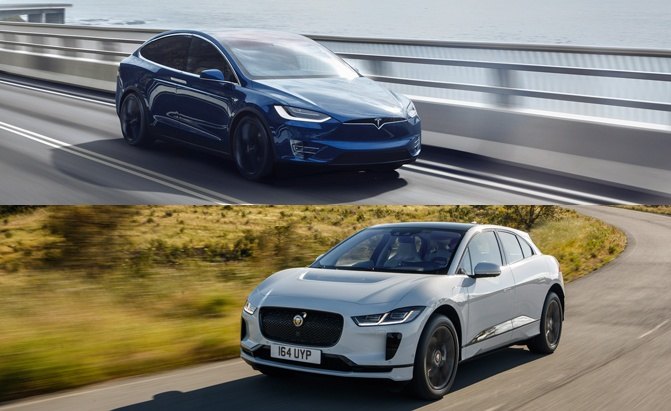























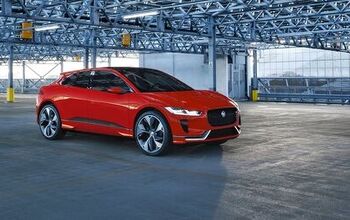
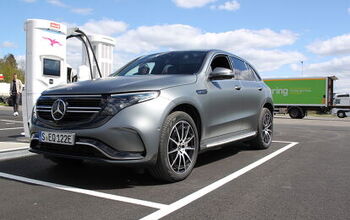
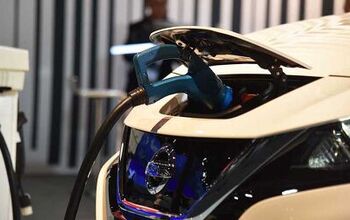
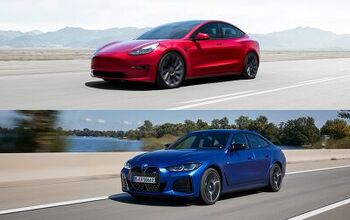










Comments
Join the conversation